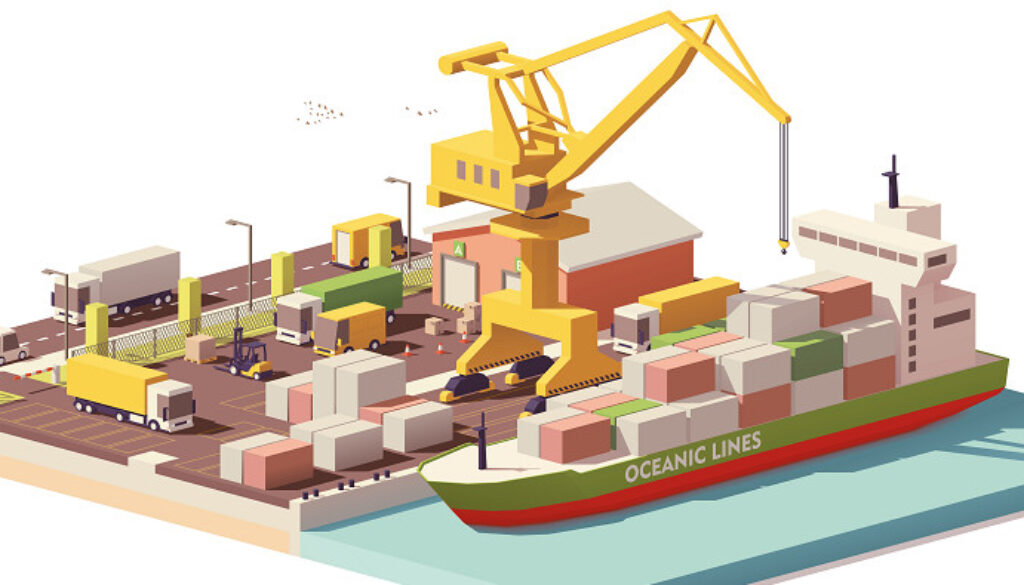Is Your Supply Chain Changing With The Times?
[ad_1][ad_2]Source link
Is Your Supply Chain Changing With The Times? When it comes to business processes, we want them to be as efficient as possible. To do so, we tend to build them into the system. Just like we have a Standard Operating Procedure for a task, we are tempted to have a SOP for how a supply chain should function.
While this approach is not wrong in itself, in an ever-changing world, it is only natural that the process must be resilient enough to allow for sometimes small, sometimes significant changes. While the skeletal framework forms part of a company’s core value proposition, leaving a wide enough buffer for changes to come is a prerequisite.
Here, we discuss how the very nature of supply chains has evolved. As you read through, I think you will agree that the business conditions that existed even a decade ago do not hold relevance now. Only the most resilient leadership with the vision to build a supply chain of the future can hope to survive the demanding test of these hyper-accelerated times.Planning Demand BackwardsTraditionally, fulfilling market demand has one powerful constraint: production capacity. Automotive retailers and phone makers alike have seen up-close the vagaries of the need for a product that suddenly catches on and goes viral. However, the ability of every business ability to fulfill demand depends on their capacity. Naturally, whatever is unfulfilled goes to a competitor.
However, as part of a dynamic restructuring of this viewpoint, we see examples of businesses that get a very accurate picture of demand first and move into production later. Apple does it all the time—most new iPhones are only ever available on time if you preorder. Several cars have also moved into this model.
While preordering can be an extra step in an already long conversion funnel, it is sometimes necessary to introduce efficiency into the system. You always know your demand accurately, thus saving time on a product that sells phenomenally well, and money on a product that doesn’t. In the era of lean businesses, that is not such a bad thing.Going GlobalGlobalization itself has been around for a while. Planning for it, unfortunately, has not. Warehouse selection still depends majorly on the cost of leasing and proximity to a seaport. While both these considerations are needed, we also must evaluate the physical placement of the warehouse.
On a global scale, studying demand and supply patterns helps us determine the most commonly searched, and ordered, items in a particular location. By storing more relevant products in warehouses closer to these pools of demand we can save immensely on time taken to deliver a product. As a result, we can expect better consumer trust in our brand.Sophisticated, Yet CheapQuick deliveries, unique products, and dead-cheap prices: these three attributes could describe today’s online commerce very effectively. All of these attributes are very hard to compete on or to adjust independently of one another. So how are some companies winning the price wars, while others just fail?
The ones who finish the race have two key elements in common. One, they reduce costs, not at the expense of profits but innately. In other words, they use new technology, buyer knowledge, and data analytics to reduce their cost of being in business. This allows them to pass on the value to their consumers as well.
[WooZoneProducts asin=”B071NMW1MW”][/WooZoneProducts]
Two, companies are investing some of the money thus saved into building a better user experience. They are beginning to move back to human interaction instead of the IVR, and are using every opportunity they get to register as a trusted brand in the consumer’s mind.Fragmented, Yet OneHow do some of America’s largest retailers handle returns? Through outsourcing, of course! Manufacturers are not new to the idea of outsourcing the production of parts, or the actual shipping and delivery. That’s one reason why so many automobile franchises exist in a single city.
In particular areas such as the actual production, sales, and service, we may have reservations about outsourcing. After all, the more you outsource, the more you have to manage. A supply chain that makes allowances for disruptions in these processes, either internal or external, has a better chance of surviving the competition. In other words, it is desirable to build a supply chain out of outsourced components, thus reducing the operational burden on any single entity.An Expanded View Of The Supply ChainIn recent times, building a supply chain has not been the focus of businesses as much as developing a value chain. A value chain offers transparency of information, so that each stakeholder in the process may make a decision based on the best information available to them.
As a result, a carrier understands the need to handle a product with utmost care as it is to be delivered for a special occasion. A manufacturer sees the need for using quality as a benchmark, as that is one of a brand’s core values. A consumer also gains decision-making power from a value chain. They understand the process by which a product reaches them, and are in a better position to decide if a product is indeed worth its monetary value. A value chain has the potential to build very long-term business value.Irfan Khan is the president and CEO of Bristlecone (a subsidiary of the $19-billion Mahindra Group).
Need a Logistics Provider?
Compare over 100 InstantlyDiscover more from My Business Web Space
Subscribe to get the latest posts sent to your email.
